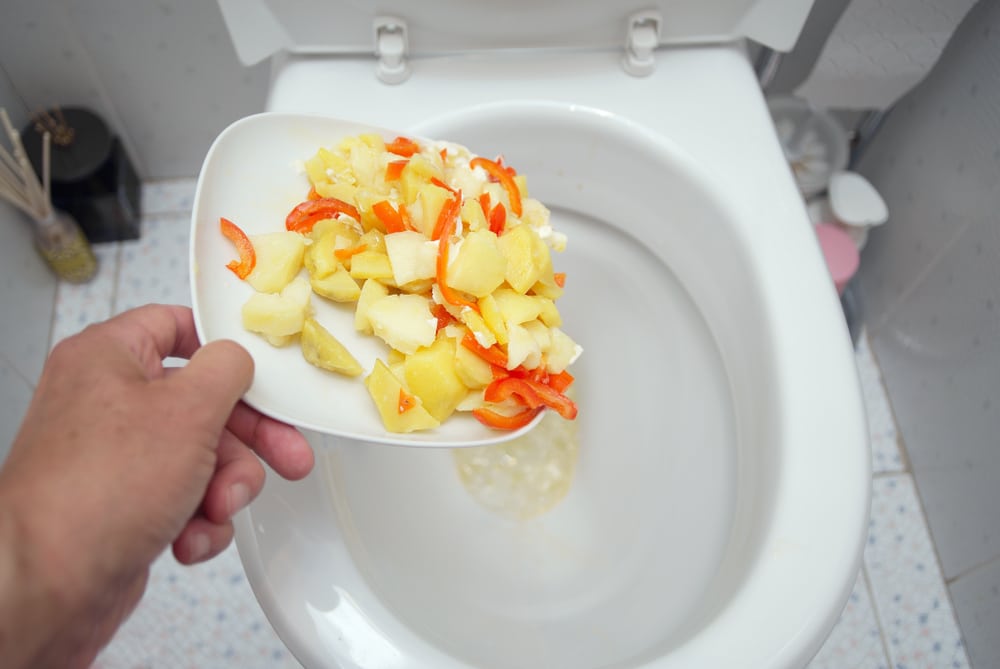What're your opinions on Think Twice Before Flushing Food Down Your Toilet?

Intro
Many people are usually confronted with the issue of what to do with food waste, especially when it concerns leftovers or scraps. One typical concern that arises is whether it's okay to flush food down the bathroom. In this post, we'll explore the reasons people may consider purging food, the effects of doing so, and alternative techniques for proper disposal.
Reasons why individuals may consider flushing food
Absence of awareness
Some people might not understand the prospective injury triggered by flushing food down the bathroom. They may wrongly believe that it's a safe practice.
Comfort
Flushing food down the toilet might appear like a fast and very easy solution to getting rid of undesirable scraps, specifically when there's no close-by garbage can readily available.
Negligence
In some cases, individuals might simply select to flush food out of sheer idleness, without considering the repercussions of their actions.
Consequences of flushing food down the toilet
Environmental impact
Food waste that ends up in waterways can add to air pollution and damage marine environments. Additionally, the water used to purge food can strain water sources.
Pipes issues
Purging food can result in stopped up pipelines and drains pipes, creating expensive pipes repair work and troubles.
Types of food that ought to not be flushed
Coarse foods
Foods with fibrous appearances such as celery or corn husks can obtain tangled in pipelines and create obstructions.
Starchy foods
Starchy foods like pasta and rice can take in water and swell, causing clogs in pipes.
Oils and fats
Greasy foods like bacon or food preparation oils need to never be purged down the toilet as they can solidify and trigger clogs.
Correct disposal techniques for food waste
Making use of a garbage disposal
For homes equipped with garbage disposals, food scraps can be ground up and purged with the pipes system. Nevertheless, not all foods appropriate for disposal in this manner.
Recycling
Specific food packaging products can be reused, lowering waste and decreasing environmental effect.
Composting
Composting is an environmentally friendly way to get rid of food waste. Organic products can be composted and utilized to enhance soil for horticulture.
The value of proper waste monitoring
Lowering ecological damage
Appropriate waste management methods, such as composting and recycling, assistance minimize contamination and preserve natural resources for future generations.
Securing pipes systems
By avoiding the technique of flushing food down the bathroom, homeowners can stop expensive plumbing repairs and preserve the honesty of their pipes systems.
Final thought
In conclusion, while it may be appealing to flush food down the bathroom for comfort, it is very important to recognize the prospective consequences of this action. By taking on appropriate waste administration practices and dealing with food waste sensibly, individuals can add to much healthier plumbing systems and a cleaner setting for all.
FLUSH FOOD DOWN THE TOILET?
FLUSHING FOOD CAN CAUSE BLOCKED DRAINS IN YOUR HOME
All of the plumbing fixtures in your home are connected to the same sewer pipe outside of your home. This outdoor sewer pipe is responsible for transporting all the wastewater from your home to the Council sewer mains. Even small pieces of food that go down the kitchen sink can cause problems for your sewer. It should therefore be obvious that flushing larger bits of food, such as meat, risks a clog in either the toilet itself or the sewer pipes. Flushing greasy food is even more problematic because oil coagulates when it cools, coating the interior lining of your pipes.
THE TOILET IS NOT A BIN
Food isn’t the only thing that people shouldn’t be flushing down the toilet. People use the toilet to dispose of all kinds of things such as tampons, makeup wipes, dental floss, kitty litter and even underwear. Water goes to great lengths to educate residents about the high costs and stress placed on wastewater treatment systems simply from people flushing the wrong stuff down the toilet. It costs taxpayers millions of dollars each year, and homeowners thousands in blocked drain repairs.
FLUSHING FOOD IS A WASTE OF WATER
Flushing food is a waste of our most precious resource - water. In June this year Level 1 water restrictions were introduced to protect water supply from drought conditions. Much of New South Wales continues to be affected by prolonged drought with recent figures revealing up to 97 per cent of the state remains in drought. Depending on whether you have a single or dual flush toilet, every single flush uses between five and 11 litres of water. In the current climate this is a huge amount of water to be wasting on flushing food that should be placed in the bin (or better yet, the compost).
https://www.jabplumbingsolutions.com.au/blog/can-you-flush-food-down-the-toilet

Do you appreciate reading about Flushing Food Down the Toilet?? Leave a remark down the page. We would be glad to see your views about this write-up. In hopes that you come back again soon. Those who enjoyed reading our page plz make sure you remember to pass it around. I value reading our article about What Can Happen If You Flush Food Down the Toilet?.
Rates